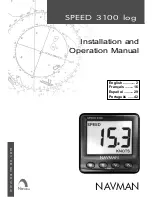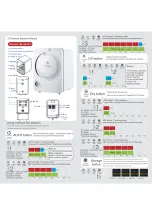
RTC
®
5 PC Interface Board
Rev. 1.9 e
2 Product Overview
35
innovators for industry
• For controlling a 3-axis scan system (see
– Both scan head connectors must be used and a
3D correction file must be correctly assigned.
– Simultaneous control of two 3-axis scan sys-
tems will require two RTC
®
5 boards.
• Image field correction
– New correction files are needed (see
> File name extension “.ct5”
> Correction with higher resolution
> Correction data information in the file
header is queryable
> RTC
®
2/3/4 correction files (.ctb) need to be
newly calculated or converted via a program
supplied with the RTC
®
5.
– Up to four correction files can be loaded to the
RTC
®
5 board.
– Enhanced 3D image field correction via stretch
)
• Coordinate transformations (see
):
– The correction file is no longer transformed
(rotation, shift, extension) at download
– Matrix transformations are only applied after
microvectorization – this may cause the
marking speed to change.
– 24-bit vector coordinates: objects larger than
the image field are possible (virtual processing
field, see
)
– Collection of transformation definitions and
execution together with a following command
– Online positioning (see
• Position monitoring of i
DRIVE
®
scan systems via
backward transformation of actual position
values (see
• Automatic self-calibration (see
– Optimization of previous functions
– ASC hardware check
• Jump mode (see
Laser Control
• The signal levels of the laser control signals are no
longer determined by configuring jumpers.
Instead, they can/must be software-configured
(see
).
• 15-pin female D-SUB laser connector with all laser
signals at the RTC
®
5 slot cover (see
9-pin female D-SUB connector only via an
optional laser adapter (see
• 15-pin female D-SUB laser connector config-
urable via software command (see
).
• Laser control signals with 15 ns resolution and
20 mA output current
• Standby signals in YAG modes (see
• YAG mode 5: Time between FirstPulseKiller signal
and first laser pulse in YAG mode is freely
programmable (see
• Laser mode 6: LASERON signal synchronized with
a continuously-running LASER1 signal (see
• Pulse picking laser mode (see
• Laser pulse period, pulse length or analog output
are also programmable within a polyline between
two vectors (see “short list commands”
• Commands for position-dependent, speed-
dependent, vector-defined and encoder-speed-
dependent laser control (see
















































